Squirrels On The Move
The red squirrel is one of Scotland’s most treasured mammals but has not been seen in many parts of the Highlands for generations. Rewilding charity Trees for Life, is taking pioneering steps to change that.

Between 1903 and 1946 the Highland Squirrel Club reportedly killed no fewer than 103,000 red squirrels. The arboreal acrobat was treated as vermin, a threat to a fledgling forestry industry. Such is the shift in societal attitudes since, that the very same “vermin” now adorns magazine covers, heads up advertising campaigns and has spawned endless conservation appeals. Modern Britain loves red squirrels.
The wild forest that once stretched across much of the Scottish Highlands, would have allowed a red squirrel to travel from Lockerbie to Lochinver without ever touching the ground. Today that forest covers just 2% of its former range.
As red squirrels don't willingly cross open country, Scotland's fragmented wooded landscape effectively imprisons them on islands of trees surrounded by an ocean of inaccessible moorland.
Trees for Life, the Scottish rewilding charity dedicated to the restoration of a wild forest, has embarked on a pioneering project to translocate red squirrels to the North West Highlands, where despite improving habitat, squirrels have been absent for decades. By taking a few squirrels from areas like the Moray coast where they’re plentiful, Trees for Life is committed to establishing eight new populations in and around Torridon and Ullapool.

ABOVE: Cage traps are baited weeks before capture to acclimatise squirrels.
Becky Priestley is the charity’s Wildlife Officer and using methodology previously pioneered by the Roy Dennis Wildlife Foundation, Becky has perfected the art of moving squirrels. The process is quick and effective with red squirrels being trapped, health checked, transported and released within 24hours.

ABOVE: Once captured the squirrels are quickly moved to minimise stress.
The squirrels are initially attracted by bait placed inside cage traps, which are only set to capture on translocation day. Once a squirrel is secure in the trap Becky checks its gender, weight and overall health before placing it in a transit box containing food and hydration for the journey. The squirrels remain in their transit boxes overnight before hunger drives them out at first light.
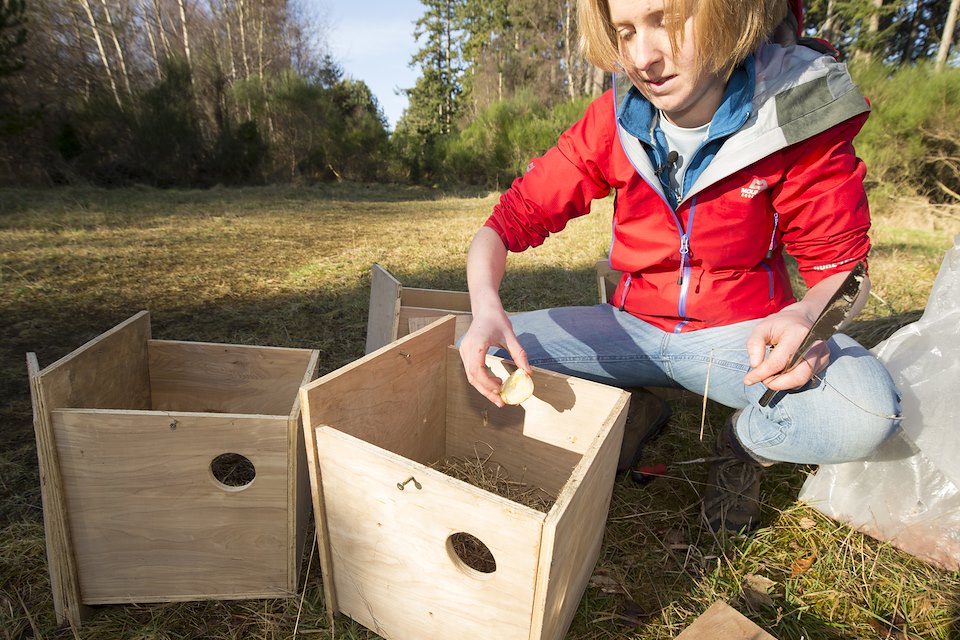
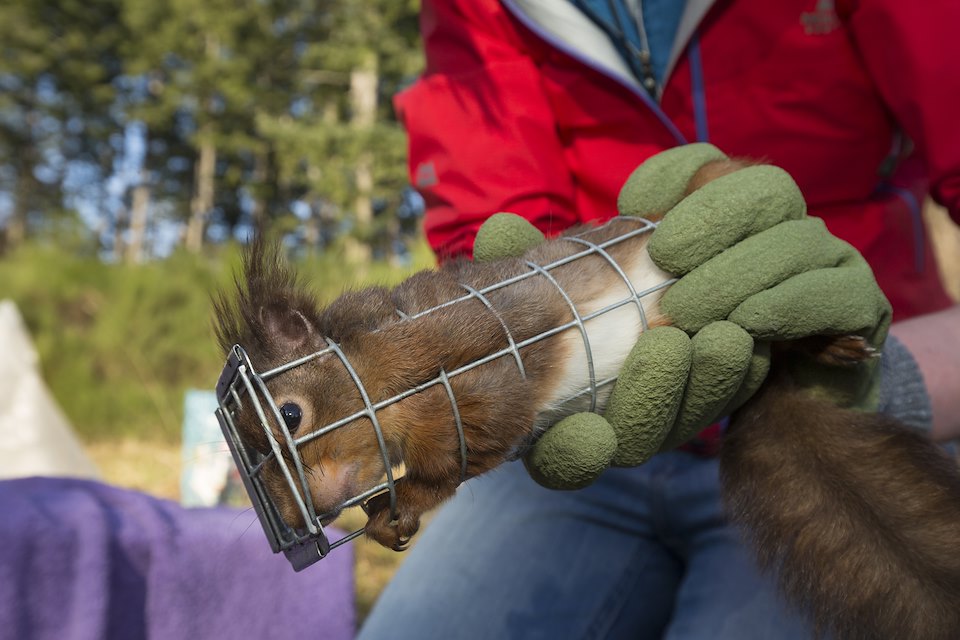
ABOVE LEFT: Specially designed transit boxes provide bedding, food and hydration. ABOVE RIGHT: Squirrels are sexed and health checked to ensure the new populations are gender balanced and free of disease.
The woodland to which the squirrels are moved has been assessed for suitability, ensuring the translocation has the highest chance of success. This project has significant ecological benefits with red squirrels re-occupying an empty niche in these woodlands. Significantly though, Trees for Life attach just as much importance to the engagement opportunities provided with local communities. Almost without exception local residents have been keen to help with monitoring the squirrels and providing supplementary feeding. That sense of pride and ownership in having red squirrels back in their local woods is a particularly valuable facet to ensuring the project’s success.
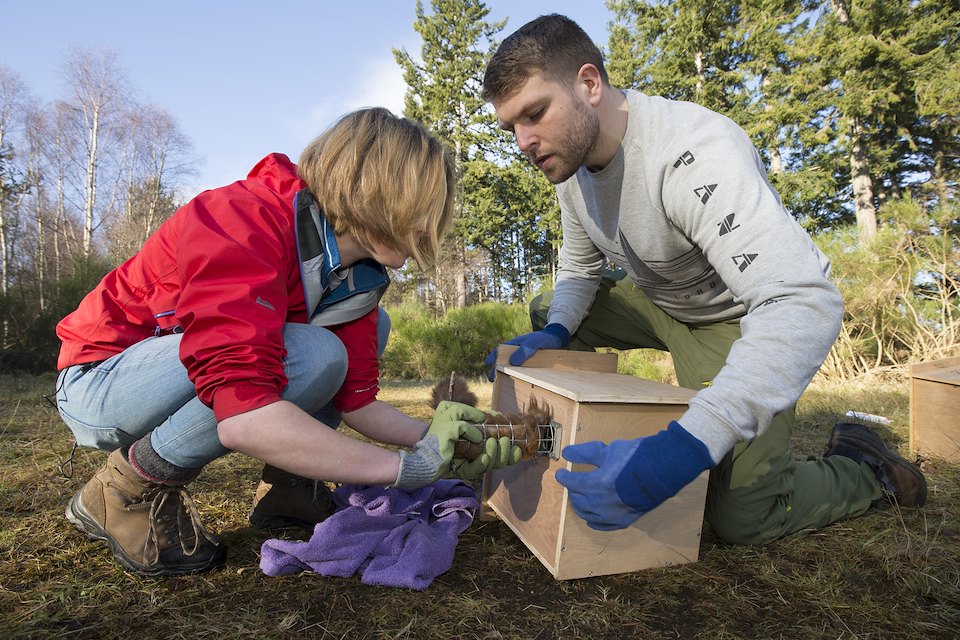
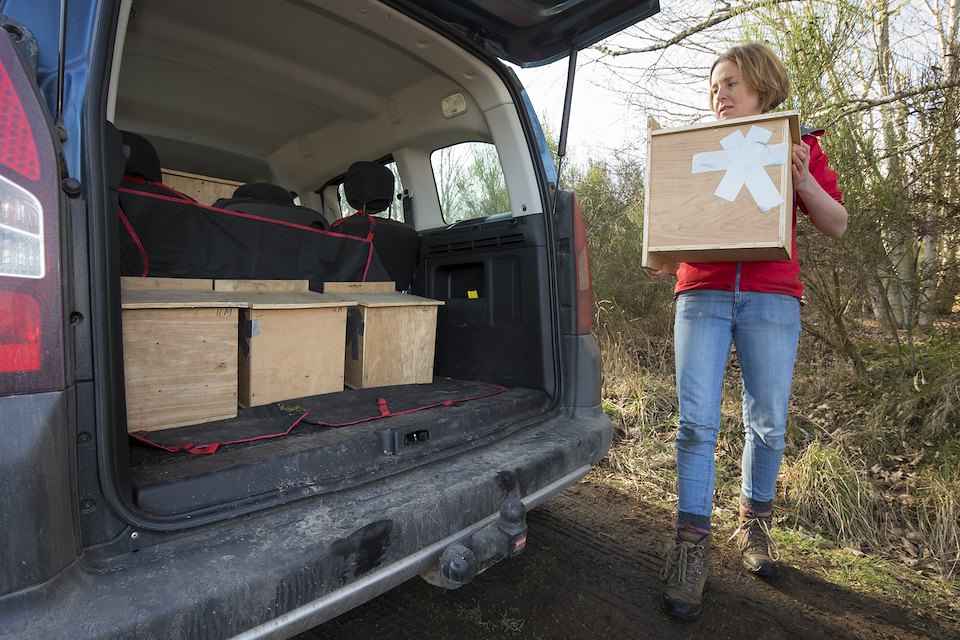
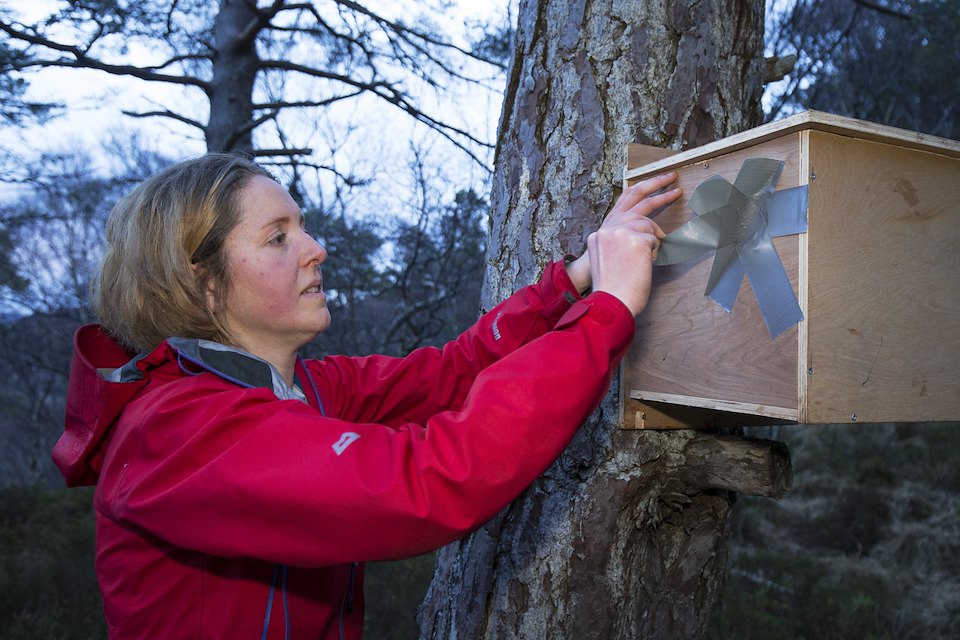
TOP AND BOTTOM LEFT: Squirrels are then transferred to their transit boxes for onward transportation. BOTTOM RIGHT: Becky Priestly attaches the transit box to a scots pine in the squirrel’s new woodland home.
The very fact that Trees for Life have to move red squirrels, underlines the paucity of woodland corridors allowing them to roam freely. This project shines a light on the lack of forest connectivity across Scotland with woodland cover - native woodland in particular - one of the lowest in Europe.

ABOVE: At first light the squirrel emerges to feed and explore.
Expanding, and perhaps more importantly, reconnecting those islands of trees, is essential for red squirrels, along with a host of other species dependent on healthy forest networks. In effect then, this much-loved rodent is a messenger for the health of the habitat it relies on. There is a growing realisation across Scotland that the natural world is not simply a collection of individual species to be conserved in isolation, but an integrated system whereby all living organisms have a role to play. Few would disagree that the forests of the North West Highlands need red squirrels but ultimately, an animal so recently persecuted and now adored, needs a home.
Learn more at: www.treesforlife.org.uk


